#The role of recycling in sustainable cities
Explore tagged Tumblr posts
Text
Building Sustainable Cities and Communities: The Path to a Greener Future
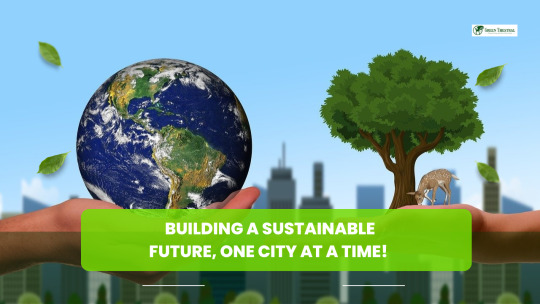
In today's rapidly urbanizing world, the concept of sustainability has become more important than ever. Goal 11 of the United Nations' Sustainable Development Goals (SDGs) focuses on creating sustainable cities and communities. With the global population projected to reach 9.8 billion by 2050, the need for sustainable urban planning and development is paramount. This article explores the significance of Goal 11 and highlights the key strategies and initiatives required to build greener, more resilient cities and communities.
Understanding Goal 11
Goal 11 of the United Nations' Sustainable Development Goals (SDGs) has a comprehensive vision for cities and human settlements. It recognizes the importance of inclusivity, safety, resilience, and sustainability in urban areas. By addressing various aspects of urban development, Goal 11 aims to create thriving communities that prioritize the well-being of their residents and the environment.
One of the key objectives of Goal 11 is to ensure the availability of affordable housing. Access to adequate, safe, and affordable housing is a fundamental right for all individuals. However, in many urban areas, housing affordability has become a significant challenge, leading to homelessness and housing insecurity. Goal 11 emphasizes the need to implement policies and initiatives that promote affordable housing options. This can be achieved through social housing programs, rent control measures, and housing subsidies. By ensuring affordable housing, cities can address social inequality, provide stability to residents, and foster inclusive communities.
Sustainable transport systems are another crucial aspect of Goal 11. Transportation is a major contributor to greenhouse gas emissions and air pollution in cities. To create sustainable cities and communities, it is essential to prioritize low-carbon and efficient transportation options. This includes expanding public transportation networks, encouraging cycling and walking infrastructure, and promoting the use of electric vehicles. By shifting away from private vehicles and promoting sustainable modes of transportation, cities can reduce congestion, improve air quality, and enhance mobility for all residents.
Efficient waste management is also highlighted in Goal 11. As cities grow, waste generation increases, posing significant environmental challenges. Sustainable waste management practices are crucial to minimize the environmental impact of urban areas. Goal 11 encourages the adoption of integrated waste management systems that prioritize waste reduction, recycling, and resource recovery. This can be achieved through initiatives such as waste segregation, composting, and the establishment of recycling facilities. Effective waste management not only helps reduce environmental pollution but also promotes the concept of a circular economy, where resources are used efficiently and waste is minimized.
Access to green spaces is another essential element of sustainable cities and communities. Urban areas often face challenges related to limited green areas and a lack of connection with nature. Goal 11 recognizes the importance of green infrastructure, which includes parks, urban forests, green roofs, and other natural elements integrated into the built environment. These green spaces provide numerous benefits, including improved air quality, reduced heat island effect, enhanced biodiversity, and increased recreational opportunities. By incorporating green spaces into cities, residents can have access to nature, promoting physical and mental well-being.
Preserving cultural heritage is a crucial aspect of Goal 11. Cities and communities are rich in history, culture, and traditions that contribute to their identity and uniqueness. Goal 11 emphasizes the need to safeguard cultural heritage sites, historic buildings, and traditional practices. By preserving cultural heritage, cities can maintain a sense of identity, promote cultural diversity, and attract tourism and economic opportunities. This preservation contributes to the social fabric and vibrancy of cities, making them more sustainable and livable.
By implementing the objectives of Goal 11, societies can enhance the quality of life for residents, reduce environmental impacts, and promote economic growth. Sustainable cities and communities prioritize the well-being of their residents, ensure social equity, and protect the environment. They provide affordable housing options, efficient transport systems, proper waste management, access to green spaces, and preserve cultural heritage. Ultimately, the successful implementation of Goal 11 leads to inclusive, safe, resilient, and sustainable urban areas that benefit present and future generations.
Sustainable Urban Planning
Sustainable urban planning is a key factor in the successful achievement of Goal 11: Sustainable Cities and Communities. It focuses on designing cities and communities that are not only visually appealing and functional but also prioritize environmental sustainability, resource efficiency, and the well-being of residents.
One of the primary principles of sustainable urban planning is the concept of compact cities. This approach encourages the development of cities that are designed to be dense and compact, rather than sprawling outward. Compact cities promote the efficient use of land, resources, and infrastructure. By concentrating development within a smaller footprint, compact cities minimize urban sprawl, preserve valuable agricultural land and natural habitats, and protect ecosystems. This approach also helps to reduce the need for long commutes, as essential services, amenities, and employment opportunities are located within close proximity to residential areas.
Well-connected cities are another crucial aspect of sustainable urban planning. The goal is to create cities and communities where different neighborhoods and areas are easily accessible to one another. This can be achieved through the design and implementation of a comprehensive transportation network that prioritizes public transportation over private vehicles. Robust public transportation systems, including buses, trains, and light rail, can reduce traffic congestion, lower carbon emissions, and enhance mobility for residents. Additionally, sustainable urban planning promotes the development of pedestrian-friendly infrastructure and encourages the use of bicycles, further reducing reliance on private vehicles and promoting active and healthy lifestyles.
Renewable energy plays a significant role in sustainable urban planning. The transition to clean and renewable energy sources is essential to reduce greenhouse gas emissions and combat climate change. Sustainable cities and communities incorporate renewable energy technologies, such as solar panels and wind turbines, into their infrastructure. By integrating renewable energy sources, cities can reduce their dependence on fossil fuels for electricity generation, mitigate air pollution, and contribute to a greener and more sustainable energy future.
Sustainable urban planning also emphasizes mixed land-use development. This approach seeks to create neighborhoods and areas where residential, commercial, and recreational spaces coexist in close proximity. Mixed land-use development reduces the need for long-distance travel and promotes walkability. It allows residents to access essential services, educational institutions, employment opportunities, and recreational facilities without having to rely heavily on private vehicles. By integrating various land uses, sustainable urban planning fosters vibrant and diverse communities that promote social interaction and economic vitality.
Furthermore, sustainable urban planning takes into account the importance of green infrastructure. This involves incorporating green spaces, parks, and natural elements into the urban fabric. Green infrastructure provides numerous benefits, such as improved air quality, temperature regulation, stormwater management, and biodiversity conservation. Parks and green spaces offer recreational opportunities, enhance the aesthetic appeal of cities, and contribute to the overall well-being and quality of life of residents.
In conclusion, sustainable urban planning is crucial for achieving Goal 11: Sustainable Cities and Communities. By designing cities and communities that are compact, well-connected, and resource-efficient, we can minimize urban sprawl, protect ecosystems, and reduce carbon emissions. Sustainable urban planning promotes mixed land-use development, prioritizes public transportation, and encourages the use of renewable energy sources. It also recognizes the importance of green infrastructure and the integration of natural elements into urban environments. By embracing sustainable urban planning principles, cities and communities can create a more sustainable, livable, and resilient future for all.
Green Infrastructure
Green infrastructure plays a vital role in creating sustainable cities and communities. It refers to the integration of natural elements, such as parks, green roofs, urban forests, green walls, and permeable surfaces, into the built environment. By incorporating these green spaces into cities and communities, numerous benefits are realized, positively impacting both the environment and the well-being of residents.
One significant advantage of green infrastructure is the improvement of air quality. Trees, plants, and vegetation help absorb pollutants such as carbon dioxide, nitrogen dioxide, and particulate matter from the air. Through the process of photosynthesis, plants release oxygen and filter harmful substances, leading to cleaner and healthier air. This reduction in air pollution contributes to the overall improvement of public health, as exposure to pollutants is linked to respiratory diseases and other health issues.
Another benefit of green infrastructure is the mitigation of the urban heat island effect. Urban areas tend to have higher temperatures than surrounding rural areas due to the concentration of buildings, roads, and concrete surfaces that absorb and retain heat. By incorporating green spaces, such as parks and urban forests, cities can create pockets of vegetation that provide shade and evaporative cooling, reducing ambient temperatures. This helps create a more comfortable and livable environment, particularly during hot summer months.
Green infrastructure also enhances biodiversity within urban areas. Traditional urban development often results in the destruction of natural habitats and fragmentation of ecosystems. By incorporating green spaces, cities can create corridors and habitats that support a variety of plant and animal species. These spaces provide shelter, food sources, and nesting areas, promoting biodiversity and ecological balance within the urban environment. By fostering biodiversity, cities can create resilient ecosystems that can adapt to environmental changes and provide ecosystem services.
In addition to the environmental benefits, green infrastructure also provides social and economic advantages. Access to green spaces has been shown to have a positive impact on mental health and well-being. People living in areas with green infrastructure have increased opportunities for outdoor activities, exercise, and relaxation, which can reduce stress, improve mood, and enhance overall quality of life. Green spaces also provide opportunities for social interaction and community engagement, fostering a sense of belonging and community cohesion.
Furthermore, incorporating green infrastructure into cities and communities contributes to economic prosperity. Green spaces attract tourism and visitors, generating revenue for local businesses. Properties located near green spaces often experience increased value, leading to economic benefits for property owners. Green infrastructure also has the potential to create job opportunities, particularly in the areas of park maintenance, landscaping, and urban forestry.
To fully realize the benefits of green infrastructure, strategic planning and implementation are essential. Cities and communities need to consider factors such as appropriate land allocation, connectivity of green spaces, and community engagement in the planning process. Collaboration between urban planners, architects, landscape designers, environmental experts, and community stakeholders is crucial to ensure the successful integration of green infrastructure into the urban fabric.
Green infrastructure plays a significant role in creating sustainable cities and communities. By integrating natural elements into the built environment, cities can reap a multitude of benefits. Improved air quality, reduced urban heat island effect, enhanced biodiversity, and increased recreational opportunities are among the advantages of green infrastructure. Moreover, it fosters a healthier and more livable environment, positively impacting the physical and mental well-being of residents. By prioritizing and investing in green infrastructure, cities can create sustainable, resilient, and vibrant urban spaces for present and future generations.
Affordable Housing
The lack of affordable housing is a significant challenge faced by many urban areas around the world. It is a complex issue that affects individuals and communities, impacting their overall well-being and quality of life. Goal 11 of the United Nations' Sustainable Development Goals recognizes the importance of addressing this challenge and emphasizes the need to ensure access to adequate, safe, and affordable housing for all.
Affordable housing refers to housing options that are within the financial means of individuals and families, considering their income levels. It is a fundamental right that enables individuals to live in safe and decent conditions, fostering stability and security. However, in many cities, the cost of housing has escalated significantly, making it unaffordable for a significant portion of the population, particularly low-income households.
To address this issue, Goal 11 encourages the implementation of policies and initiatives that promote affordable housing options. One approach is through the establishment of social housing programs. Social housing involves the provision of housing units at below-market rates to individuals and families who are unable to afford market-rate housing. These programs are often administered by government agencies or non-profit organizations and aim to provide affordable and stable housing for those in need. Social housing plays a crucial role in addressing homelessness, reducing housing inequality, and promoting social stability.
Rent control measures are another policy tool used to promote affordable housing. Rent control laws set limits on the amount landlords can increase rents, providing stability for tenants and preventing excessive rent hikes. These measures aim to protect vulnerable populations from the risk of displacement due to rising housing costs. Rent control can help maintain affordable housing options in areas where market forces would otherwise drive up rents, allowing individuals and families to remain in their homes and communities.
In addition to social housing and rent control, the provision of housing subsidies is another strategy to promote affordable housing. Housing subsidies are financial assistance programs that help low-income individuals and families cover the cost of housing. These subsidies can come in the form of rental assistance, such as Section 8 vouchers in the United States, or direct financial assistance to support homeownership. Housing subsidies help bridge the gap between income levels and housing costs, making housing more affordable and accessible to those in need.
Promoting affordable housing not only addresses the immediate issue of homelessness and housing insecurity but also contributes to social stability and inclusive communities. Access to affordable housing allows individuals and families to establish roots, build community connections, and contribute to the local economy. It fosters a sense of stability and security, providing a foundation for individuals to pursue education, employment, and other opportunities that contribute to their overall well-being. Affordable housing also helps prevent the displacement of vulnerable populations, preserving the social fabric and diversity of communities.
However, addressing the lack of affordable housing requires a multi-faceted approach and collaboration between various stakeholders. Governments, policymakers, urban planners, and community organizations play a crucial role in implementing effective strategies and initiatives. It is essential to consider factors such as land use planning, zoning regulations, construction costs, and the availability of financing mechanisms to support affordable housing development.
Furthermore, affordable housing initiatives should prioritize sustainable and energy-efficient design and construction practices. This not only reduces the environmental impact of housing but also lowers ongoing utility costs for residents, making housing more affordable in the long run. The integration of affordable housing with transportation hubs, amenities, and employment opportunities is also important to ensure that residents have access to essential services and can minimize transportation costs.
The lack of affordable housing is a critical challenge in urban areas, impacting the well-being and quality of life of individuals and communities. Goal 11 recognizes the importance of ensuring access to adequate, safe, and affordable housing for all. Through the implementation of policies and initiatives such as social housing programs, rent control measures, and housing subsidies, affordable housing options can be promoted. Affordable housing contributes to social stability, inclusive communities, and provides individuals and families with a foundation for economic and personal development. Addressing the issue of affordable housing requires a comprehensive and collaborative approach, involving governments, policymakers, urban planners, and community organizations to create sustainable and inclusive cities and communities
Sustainable Transport Systems
Transportation plays a significant role in urban areas, connecting people to their workplaces, schools, healthcare facilities, and leisure activities. However, traditional transportation systems heavily rely on fossil fuels, resulting in substantial greenhouse gas emissions and air pollution. Goal 11 of the Sustainable Development Goals recognizes the need to develop sustainable transport systems that are accessible, affordable, and low-carbon, in order to create more sustainable cities and communities.
One of the key objectives of Goal 11 is to expand public transportation networks. Public transportation, such as buses, trams, and trains, offers an efficient and environmentally-friendly alternative to private vehicles. By investing in the expansion and improvement of public transportation infrastructure, cities can provide residents with reliable and affordable transportation options. This reduces the reliance on private cars, which contribute significantly to congestion, air pollution, and carbon emissions. Accessible and well-connected public transportation systems also promote social inclusivity by ensuring that individuals of all socioeconomic backgrounds have equal access to transportation services.
Promoting cycling and walking is another crucial aspect of sustainable transportation. Encouraging these modes of transportation not only reduces reliance on fossil fuels but also promotes active and healthy lifestyles. Cities can invest in infrastructure that supports safe and convenient cycling and walking, such as dedicated bike lanes, pedestrian-friendly sidewalks, and bike-sharing programs. These initiatives not only contribute to reduced traffic congestion and improved air quality but also enhance the overall well-being of residents by encouraging physical activity and reducing sedentary lifestyles.
Furthermore, Goal 11 promotes the use of electric vehicles (EVs) as a sustainable transportation option. Electric vehicles produce zero tailpipe emissions, reducing local air pollution and greenhouse gas emissions. To support the adoption of EVs, cities can establish charging infrastructure, offer incentives for purchasing EVs, and promote public transportation systems that utilize electric buses and trains. The transition to electric vehicles also contributes to reducing dependence on fossil fuels and promoting the use of renewable energy sources in the transportation sector.
In addition to reducing emissions and air pollution, sustainable transportation systems offer several other benefits. By reducing congestion through the promotion of public transportation and active modes of transportation, cities can improve traffic flow and travel times. This enhances overall mobility and accessibility for all residents, including those who cannot afford private vehicles or have mobility restrictions. Sustainable transportation systems also contribute to improved road safety by reducing the number of vehicles on the road and promoting safer infrastructure for cyclists and pedestrians.
To effectively implement sustainable transportation systems, cities need to adopt integrated and holistic approaches. This involves comprehensive urban planning that considers land use, transportation infrastructure, and public spaces. Planning should prioritize the development of compact, mixed-use neighborhoods that promote walkability and access to public transportation. It is crucial to engage with communities and stakeholders to ensure that transportation systems meet their needs and preferences.
Furthermore, the use of innovative technologies and smart transportation solutions can enhance the efficiency and sustainability of transportation systems. Intelligent transportation systems, such as real-time traffic monitoring, smart traffic signals, and integrated fare payment systems, can optimize transportation operations and improve overall system performance. These technologies can help reduce travel times, enhance user experience, and minimize environmental impacts.
In conclusion, sustainable transportation is a key component of Goal 11: Sustainable Cities and Communities. By promoting the development of accessible, affordable, and low-carbon transportation systems, cities can reduce congestion, improve air quality, and enhance mobility for all residents. Expanding public transportation networks, encouraging cycling and walking, and promoting the use of electric vehicles are important strategies in achieving sustainable transportation goals. To realize the benefits of sustainable transportation, cities should adopt integrated planning approaches, engage with communities, and leverage innovative technologies. By prioritizing sustainable modes of transportation, cities can create healthier, more livable, and environmentally-friendly urban environments.
Waste Management and Recycling
Effective waste management and recycling practices are crucial for creating sustainable cities and communities. The increasing population and urbanization have led to a significant rise in waste generation, posing environmental and health challenges. Goal 11 of the Sustainable Development Goals emphasizes the need for integrated waste management systems that prioritize waste reduction, recycling, and resource recovery.
One of the key objectives of Goal 11 is to promote waste reduction. By implementing waste reduction strategies, cities can minimize the amount of waste generated in the first place. This includes promoting the use of sustainable packaging, encouraging the adoption of reusable products, and raising awareness about the importance of minimizing waste. By reducing the amount of waste generated, cities can conserve natural resources, reduce energy consumption, and minimize the environmental impact associated with waste disposal.
Waste segregation is another essential component of effective waste management. By segregating waste at the source, cities can facilitate the recycling and proper disposal of different types of waste. Proper waste segregation involves separating recyclable materials, such as paper, plastics, glass, and metals, from non-recyclable waste. This allows for the efficient recycling and recovery of valuable resources, reducing the need for raw materials extraction and the associated environmental impact. Waste segregation can be achieved through community education and the provision of recycling bins and collection systems.
Recycling plays a critical role in sustainable waste management. It involves the conversion of waste materials into new products, reducing the demand for virgin materials and conserving natural resources. Cities can establish recycling facilities and collection programs to facilitate the recycling process. Recycling initiatives should be comprehensive and cover a wide range of materials, including paper, plastics, glass, metals, and electronic waste. By promoting recycling and creating an infrastructure to support it, cities can reduce the amount of waste sent to landfills and incineration facilities, thereby minimizing the environmental pollution and greenhouse gas emissions associated with these disposal methods.
Composting is another important practice in sustainable waste management. Organic waste, such as food scraps and yard trimmings, can be composted to create nutrient-rich soil amendments. Composting not only reduces the volume of waste sent to landfills but also produces a valuable resource that can be used in gardening, landscaping, and agricultural activities. Cities can promote home composting, as well as establish community composting programs and composting facilities, to divert organic waste from the waste stream and promote the circular economy.
To ensure the effectiveness of waste management systems, it is crucial to educate and engage communities. Public awareness campaigns and educational programs can help individuals and households understand the importance of waste reduction, segregation, and recycling. Citizens can be encouraged to adopt sustainable waste management practices through incentives, such as reduced waste collection fees for households that recycle or compost effectively. Engaging communities in the waste management process fosters a sense of responsibility and ownership, leading to increased participation and compliance with waste management guidelines.
In addition to environmental benefits, efficient waste management and recycling practices also offer economic opportunities. The recycling industry can create jobs and stimulate local economies through the collection, processing, and manufacturing of recycled materials. By promoting a circular economy, where waste is viewed as a valuable resource, cities can contribute to the creation of a sustainable and resilient economy.
Furthermore, sustainable waste management practices contribute to the overall cleanliness and aesthetic appeal of cities. Proper waste collection and disposal systems help maintain cleanliness, reduce litter, and prevent the spread of diseases. A clean and well-managed waste management system enhances the livability of cities, attracting visitors and fostering a sense of pride among residents.
Effective waste management and recycling practices are essential for achieving sustainable cities and communities. Goal 11 emphasizes the adoption of integrated waste management systems that prioritize waste reduction, recycling, and resource recovery. By implementing waste reduction strategies, promoting waste segregation, establishing recycling facilities, and promoting composting, cities can minimize the environmental impact of waste, conserve resources, and promote a circular economy. Public education and community engagement play a crucial role in ensuring the success of sustainable waste management initiatives. By investing in sustainable waste management practices, cities can create cleaner, healthier, and more environmentally-friendly urban environments for present and future generations
Climate Resilience
Building climate resilience is a critical aspect of creating sustainable cities and communities. With the increasing impacts of climate change, such as rising temperatures, extreme weather events, and sea-level rise, it is crucial for cities to develop adaptation and mitigation strategies to reduce vulnerability and enhance resilience. Goal 11 of the Sustainable Development Goals recognizes the importance of incorporating climate resilience into urban planning and development.
One of the key objectives of Goal 11 is to improve infrastructure resilience. This involves designing and constructing infrastructure that can withstand the impacts of climate change. For example, in coastal areas, infrastructure such as roads, bridges, and buildings can be built to be more resistant to storm surges and sea-level rise. In areas prone to extreme heat, infrastructure can incorporate heat-resistant materials and design elements that promote natural ventilation and cooling. By integrating climate resilience into infrastructure planning and development, cities can ensure that their critical systems and services remain operational during and after climate-related events, reducing disruption and protecting the well-being of their populations.
Implementing early warning systems is another important strategy for climate resilience. Early warning systems help cities anticipate and respond to climate-related hazards, such as hurricanes, floods, and heatwaves. These systems involve monitoring weather patterns and environmental conditions, as well as disseminating timely and accurate information to residents and relevant authorities. By providing early warnings, cities can improve preparedness, facilitate timely evacuations if necessary, and minimize the potential impacts of climate-related events on human lives and infrastructure.
Creating green infrastructure is another crucial measure for climate resilience. Green infrastructure refers to the use of natural elements, such as parks, urban forests, green roofs, and permeable surfaces, to manage stormwater, reduce the urban heat island effect, and enhance biodiversity. Green infrastructure helps mitigate the impacts of climate change by absorbing and storing rainwater, reducing the risk of flooding, and providing shade and cooling effects in urban areas. By incorporating green spaces into cities and communities, not only can the negative impacts of urbanization be mitigated, but residents can also enjoy improved air quality, enhanced recreational opportunities, and a better overall quality of life.
In addition to these specific strategies, incorporating climate resilience into urban planning is crucial. Cities need to consider climate risks and vulnerabilities in their long-term development plans. This includes identifying areas at risk of flooding, landslides, or other climate-related hazards and implementing appropriate land-use planning measures. For example, zoning regulations can be updated to prevent construction in high-risk areas or require developers to implement climate adaptation measures in their projects. By integrating climate resilience into urban planning, cities can ensure that new developments are designed with climate change in mind and that existing infrastructure is retrofitted to enhance resilience.
Furthermore, collaboration and partnerships are essential for building climate resilience. Cities should work with various stakeholders, including government agencies, community organizations, businesses, and academia, to develop and implement climate adaptation and mitigation strategies. Collaboration allows for the sharing of knowledge, expertise, and resources, leading to more effective and comprehensive climate resilience measures. Engaging the community in the planning and decision-making process also fosters a sense of ownership and increases the likelihood of successful implementation.
Investing in climate resilience not only helps cities adapt to the impacts of climate change but also brings multiple co-benefits. For example, green infrastructure not only helps manage stormwater but also improves air quality, enhances urban biodiversity, and provides recreational spaces for residents. Climate-resilient infrastructure can also contribute to energy efficiency, reducing greenhouse gas emissions and promoting sustainability.
In conclusion, building climate resilience is a crucial component of Goal 11: Sustainable Cities and Communities. By incorporating climate resilience into urban planning, improving infrastructure resilience, implementing early warning systems, and creating green infrastructure, cities can reduce vulnerability and enhance their ability to withstand the impacts of climate change. Collaboration and community engagement are vital for the successful implementation of climate resilience measures. By investing in climate resilience, cities can protect their populations, infrastructure, and natural resources, ensuring a more sustainable and resilient future for all.
Preserving Cultural Heritage
Preserving cultural heritage is a vital aspect of sustainable development, and Goal 11 of the Sustainable Development Goals emphasizes the significance of safeguarding cultural heritage sites, historic buildings, and traditional practices. Cultural heritage encompasses a wide range of tangible and intangible elements, including monuments, archaeological sites, traditional craftsmanship, folklore, language, and social practices. By protecting and promoting cultural heritage, cities and communities can foster a sense of identity, promote social cohesion, attract tourism, and generate economic opportunities.
One of the key objectives of Goal 11 is to safeguard cultural heritage sites and historic buildings. These sites hold significant historical, architectural, and cultural value, and their preservation is crucial for maintaining a connection to the past and passing on knowledge to future generations. Historic buildings are not only physical structures but also bear witness to the stories, traditions, and identity of a place and its people. By protecting and conserving these sites, cities can maintain their unique character and cultural identity, contributing to a sense of pride and belonging among residents.
Preserving cultural heritage also has economic benefits for cities and communities. Cultural heritage tourism has gained prominence in recent years, with travelers seeking authentic experiences and a deeper understanding of local cultures. By promoting and preserving cultural heritage sites, cities can attract tourists, generate revenue, and create employment opportunities. Local businesses, such as hotels, restaurants, and handicrafts, can thrive through the promotion of cultural tourism, contributing to the local economy and livelihoods. Additionally, cultural heritage preservation can revitalize historic districts and neighborhoods, attracting investment and fostering sustainable economic growth.
Furthermore, the preservation of cultural heritage contributes to the social fabric of cities and communities. Cultural heritage is often intertwined with people's identities, traditions, and sense of belonging. By safeguarding cultural heritage, cities can strengthen social cohesion, promote intergenerational dialogue, and foster community pride. Cultural heritage preservation provides opportunities for communities to celebrate and showcase their traditions, customs, and artistic expressions. This engagement with cultural heritage enhances social inclusion and diversity, creating spaces for dialogue, mutual understanding, and appreciation of different cultures and perspectives.
In addition to tangible cultural heritage, Goal 11 also recognizes the importance of preserving intangible cultural heritage. Intangible cultural heritage refers to practices, expressions, knowledge, and skills that are passed down from generation to generation. It includes oral traditions, performing arts, rituals, traditional craftsmanship, and knowledge systems. Preserving intangible cultural heritage not only safeguards traditional practices but also promotes cultural diversity and encourages intercultural dialogue. It is through the transmission and revitalization of intangible cultural heritage that cities and communities can maintain their unique identities and contribute to a rich and vibrant cultural landscape.
To effectively preserve cultural heritage, cities and communities need to engage in comprehensive and inclusive planning and decision-making processes. This involves collaboration with local communities, cultural institutions, heritage experts, and relevant stakeholders. It is important to involve local residents in decision-making processes, ensuring that their voices are heard and their cultural heritage is respected and protected. Additionally, capacity-building initiatives and educational programs can empower local communities to actively participate in the preservation and promotion of their cultural heritage.
The preservation of cultural heritage is an integral part of sustainable development. Goal 11 highlights the importance of safeguarding cultural heritage sites, historic buildings, and traditional practices. By protecting and promoting cultural heritage, cities and communities can foster a sense of identity, social cohesion, and economic opportunities. Cultural heritage preservation contributes to the uniqueness and vibrancy of cities, attracting tourism, and enriching the lives of residents. By integrating cultural heritage into urban planning and development, cities can create sustainable, inclusive, and culturally rich environments for present and future generations.
Conclusion
Goal 11: Sustainable Cities and Communities is a critical component of the United Nations' Sustainable Development Goals. As urbanization continues to accelerate, it is crucial to prioritize sustainable urban planning, green infrastructure, affordable housing, sustainable transport systems, waste management, climate resilience, and the preservation of cultural heritage. By working towards these objectives, cities and communities can create a more sustainable, inclusive, and livable future for all. Embracing Goal 11 is not only an environmental imperative but also a pathway to economic prosperity, social equity, and a greener future for generations to come.
#How to create sustainable cities and communities#Importance of sustainable urban planning#Achieving Goal 11: Sustainable Cities and Communities#Benefits of green infrastructure in cities#Affordable housing solutions for sustainable communities#Promoting sustainable transport systems in cities#Effective waste management for sustainable cities#Preserving cultural heritage in sustainable development#Building climate resilience in cities#The role of recycling in sustainable cities#Sustainable urban planning for resilient communities#Creating inclusive and safe cities through Goal 11#How green spaces enhance sustainable cities#Addressing the challenges of affordable housing in urban areas#Reducing carbon emissions through sustainable transport#Implementing waste reduction strategies for sustainable communities#The economic benefits of cultural heritage preservation#Enhancing infrastructure resilience in the face of climate change#Sustainable waste management practices for cities#Promoting community engagement in sustainable urban development#Integrating climate resilience into urban planning#Incorporating green infrastructure for sustainable communities#The social impact of affordable housing initiatives#Mitigating air pollution through sustainable transport systems#Circular economy approaches in waste management for cities#Preserving historic buildings for sustainable cities#Creating resilient communities through Goal 11 strategies#Promoting cultural diversity in sustainable urban environments#Building sustainable cities for future generations#Achieving sustainability goals through Goal 11: Sustainable Cities and Communities
0 notes
Text
5 start-ups powering a green revolution across Latin America
Latin American countries are among the most vulnerable to the impacts of the climate crisis and environmental degradation.
Local innovators from the World Economic Forum’s UpLink community are meeting these challenges with a range of sustainable solutions.
From forest schools to greywater recycling, a green revolution is taking place across the region.
2. Nilus: The power of community buying
Tech start-up Nilus helps people on low incomes access affordable, nutritious food by unlocking the power of community group buying.
The company’s technology secures food and groceries directly from farmers and local producers and distributes them through community buying networks to people who live in food deserts – areas with limited access to affordable and nutritious food. By optimizing and streamlining the food supply chain, Nilus offers products at 70-75% below market prices. It currently operates in Mexico City, Buenos Aires and Lima, Peru.
3. Amazonia Emprende: Rainforest re-education
Illegal mining and cattle ranching are some of the many problems that blight the Amazon rainforest in southern Colombia.
Amazonía Emprende is a pioneering ‘forest school’ that aims to educate local communities, enterprises and students on the ecological, social and economic advantages of nature-based solutions. The initiative also helps forge connections between communities and businesses that foster value chains, help offset carbon footprints, and restore degraded land. By working in collaboration with the Amazon’s local communities, the company plays a vital role in sustainable development and hopes to restore and conserve up to 100,000 hectares of forest by 2030.
4. AQUAKIT: Pioneering greywater treatment
Greywater from sources such as sinks, showers or washing machines accounts for a significant proportion of the total wastewater produced by households across the globe. Its reuse can have a big impact on both water security and resource efficiency.
By repurposing greywater for non-potable needs like irrigation, filling toilets and cleaning, AQUAKIT’s compact wastewater treatment systems transform wastewater into a valuable resource that conserves both water, energy and nutrients.
The Bolivian company’s technology can be tailored for large-scale residences and commercial buildings and is capable of reclaiming up to 300,000 litres of water a month in a single 12-storey building
youtube
source
#solarpunk#solarpunk business#solarpunk business models#solar punk#startup#south america#latin america#Youtube
8 notes
·
View notes
Text
Why Are Interior Designers in Gwalior So Popular?
Gwalior, a city rich in culture and history, is increasingly becoming a hub for modern interior design.
Known for its grand architecture and historical monuments, this city has seen a surge in demand for interior designers who blend heritage with contemporary aesthetics.
With rising aspirations to create both functional and stylish spaces, homeowners in Gwalior are turning to interior designers more than ever.
But what makes interior designers in Gwalior so popular? Let’s explore the key factors that contribute to their success.

10 Tips for Choosing the Right Interior Designer in Gwalior
1. A Blend of Heritage and Modern Design
Gwalior has a deep-rooted architectural heritage, with landmarks like the Gwalior Fort, Jai Vilas Palace, and intricately designed temples. This cultural richness inspires interior designers to integrate traditional elements into modern design, creating a unique blend that appeals to both young homeowners and those who appreciate classical aesthetics.
By incorporating elements like jali work, arches, and heritage-inspired motifs, interior designers in Gwalior offer a design that feels both timeless and contemporary.
2. Rising Demand for Customized Interiors
The demand for personalized and customized interiors has grown in Gwalior. Homeowners want spaces that reflect their personalities, lifestyles, and preferences, and local designers have stepped up to meet this demand.
With tailored solutions, Gwalior’s interior designers can create unique designs, whether it’s a cozy family home, a luxury villa, or a compact apartment. Their approach to personalized design sets them apart and contributes to their popularity among clients looking for unique, individualized interiors.
3. Affordable Luxury Solutions
Unlike metro cities where interior design can come with a high price tag, Gwalior offers affordable yet luxurious interior design services. Interior designers in Gwalior understand local market demands and offer budget-friendly solutions without compromising on quality. They source materials locally, keep labor costs competitive, and provide value-driven services, making luxury interiors accessible to a broader range of clients.
4. Expertise in Space Optimization
Space optimization is a key factor in modern interior design, especially in urban areas where homes may be compact. Interior designers in Gwalior have mastered the art of maximizing available space through creative layouts, multi-functional furniture, and strategic storage solutions.
By ensuring that every square foot is utilized effectively, they make even smaller homes look spacious, organized, and stylish—something that resonates with the city’s residents who seek efficient living solutions.
5. Environmentally Friendly Design Practices
Another reason why interior designers in Gwalior have gained popularity is their focus on sustainable and eco-friendly design. With a growing awareness of environmental issues, many designers in Gwalior are incorporating sustainable materials, energy-efficient lighting, and eco-friendly practices into their designs.
By using locally sourced materials, recycled elements, and promoting green design principles, they cater to environmentally conscious clients who want their homes to be both beautiful and eco-friendly.
6. Incorporating Vastu Shastra Principles
In Gwalior, as in many other parts of India, Vastu Shastra plays an essential role in home design. Interior designers in Gwalior are adept at integrating Vastu principles into their designs, ensuring that homes are not only aesthetically pleasing but also energetically balanced.
This skill appeals to many homeowners who believe in the benefits of Vastu and want spaces that are aligned with traditional values. From the direction of rooms to the placement of furniture, these designers consider Vastu guidelines to create harmonious and positive environments.
7. Attention to Detail and Quality Craftsmanship
Interior designers in Gwalior are known for their commitment to quality craftsmanship. They pay close attention to details, from selecting the right materials to overseeing the finishing touches.
By working closely with skilled artisans and craftsmen, they bring a level of precision and care to each project. Whether it’s custom woodwork, intricate tile designs, or hand-crafted décor, their focus on detail ensures that every element contributes to a cohesive and beautiful space.
8. Adapting to Modern Trends
Staying current with global design trends is another factor that boosts the popularity of Gwalior’s interior designers. They regularly incorporate modern styles, color palettes, and textures that reflect contemporary design aesthetics.
From minimalist Scandinavian styles to bold bohemian themes, these designers understand how to make a space feel fresh and on-trend. Their ability to adapt and incorporate global trends while maintaining a touch of local flair has attracted a wide range of clientele, including young professionals and families.
9. Client-Centric Approach and Professionalism
One of the hallmarks of Gwalior’s interior designers is their client-centric approach. They prioritize communication, listen to client needs, and involve them in every step of the design process.
By understanding the client’s vision and needs, they can deliver results that exceed expectations. This level of professionalism and customer service has built trust and long-lasting relationships, leading to referrals and repeat business, which further enhances their popularity.
10. Creating Value in Real Estate
With Gwalior’s growing real estate market, many homeowners and investors see the value in enhancing their properties with interior design. Well-designed interiors can significantly increase the value of a property, making it more appealing to potential buyers or renters.
Interior designers in Gwalior help property owners achieve this by elevating the aesthetic appeal and functionality of spaces. Their expertise in adding value through design makes them a go-to choose for those looking to make profitable real estate investments.
Conclusion:
The popularity of interior designers in Gwalior is a testament to their ability to merge tradition with modernity, create customized solutions, and provide value-driven services. Their deep understanding of local culture, commitment to quality, and flexibility in incorporating the latest design trends make them highly sought after.
Whether it’s creating a luxurious villa, optimizing a compact apartment, or enhancing a commercial space, interior designers in Gwalior are transforming spaces across the city, making them truly reflective of the vibrant and evolving character of Gwalior.
As Gwalior continues to grow, so does the demand for skilled interior designers who can bring visions to life. With their dedication to excellence and adaptability, Gwalior’s interior designers are set to remain at the forefront of the industry for years to come, making the city not only a historical gem but also a beacon of modern design in central India.
3 notes
·
View notes
Text

04.03.2024
Hello everyone! Apologies for the delay. My offline life has gotten quite hectic lately, which has made it hard to keep on schedule. Hopefully, things will smooth over soon!
Worldbuilding & Solar/Cyberpunk Considerations: As I mentioned in the last couple of updates, I've been working on a post on the geography, flora & fauna of The Sorcerer's Apprentice universe, which I meant to publish last week (and the week before that, lol). I've completed the three sections that correspond to the (as of yet unnamed) second empire's territory (second because the book focuses on neo-colonialism, the successor of old-world colonialism), all of which are based on the natural world of Colombia at 2600 meters above sea level and beyond. Because the plot of The Sorcerer's Apprentice mainly transpires in a city within this region, while writing the aforementioned sections, I was also trying to figure out what a city that incorporates the novel's themes (the link between colonialism, environmental catastrophe, and capitalism) would look like within this context. Given that one of the main themes is capitalism, my first impulse was to make the primary plot location in the novel a cyberpunk-inspired city. After all, what screams capitalism gone mad more than cyberpunk? To this end, I read quite a few articles on the subject (Rethinking the End of Modernity: Empire, Hyper-Capitalism, and Cyberpunk Dystopias by Jeffrey Paris, Elements of a Poetics of Cybperunk by Brian McHale, Neoliberalism and Cyberpunk Science Fiction: Living on the Edge of Burnout by Caroline Alphin, Recycled Dystopias: Cyberpunk and the End of History by Elana Gomel, The Cyberpunk Dystopia as a Reflection on Late Capitalism by Marius Florea, and more). The problem with this idea was that when I looked around me at Bogotá, the city I live in, I just couldn't see it. Bogotá is a green city. There is green everywhere you look. Furthermore, traditional-looking cyberpunk flattens any culturally specific elements it incorporates, the same way big-chain supermarkets worldwide completely obliterate the slightest whiff of uniqueness from their premises. No matter where you are, they all look the same. As I mentioned in a previous update, one of my aims with The Sorcerer's Apprentice is to celebrate the culture of my region of the world. Cyberpunk, at least as it has been traditionally conceived, works against that objective. Again, this fits with what capitalism does irl, but I really really really don't want to write yet another NYC-inspired urban hellscape. In fact, I can't think of anything worse than having my main character admire a cyberpunk city... My search for a more suitable alternative led me to the antithesis of cyberpunk, its eco-friendly adversary, solarpunk. For information on this genre, I relied mainly on @alpaca-clouds post on the History of Solarpunk and @solarpunks's informative response, which includes several very helpful links (check out both posts here!). At first glance, solarpunk seemed to fit The Sorcerer's Apprentice much better than cyberpunk had; it allowed me to envision a city that elevated rather than obscured (or flattened) present-day Colombian culture. Basically, with solarpunk I could keep the city green, as cities in this region of the world tend to be; I could retain the push for sustainable innovations that play such a vital role in our mainstream policy; and I could keep the regional architecture, as well as site-specific building materials like guadua, a hardy local species of bamboo. Most importantly, with solarapunk I could genuinely describe the city with respect and admiration. The only remaining issue was to figure out how to incorporate the novel's themes into this genre. After all, although Solarpunk is utopic, The Sorcerer's Apprentice is not. How do I illuminate and criticize the link between capitalism, colonialism and environmental decay within a fantastical city that walks and talks like a utopia?

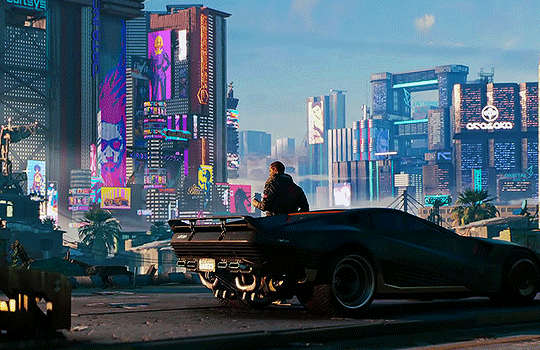
Cont. My solution is to create a hybrid proposal somewhere between cyberpunk and solarpunk; a city that presents like solarpunk, but that has achieved this green, sustainable self-expression without renouncing its colonial and capitalist exploitation of vulnerable peoples and environments elsewhere. Essentially, this would make the city the large-scale equivalent of one of those high-end clothing brands that have "recycled" symbols on their tags, but that have their product made in deplorable overseas sweatshops. The message of the novel would, thus, be amplified to include the idea that there can be no environmental justice without social justice. Does it work? We'll see. That's what I've got so far.
Researched the Link between Colonialism, Environmental Catastrophe and Capitalism: To educate myself on the main themes of the novel and how these can be better incorporated into the setting, I picked up Chaos in the Heavens: The Forgotten History of Climate Change by Jean-Baptiste Fressoz & Fabien Locher, and translated by Gregory Elliott. And let me tell you, I was not expecting to learn what I learned!!! This book is honestly fire. I had no idea climate science was so deeply rooted in colonialism!! Honestly, more than any other book I've read so far, Chaos in the Heavens articulates the link between the three main themes I've been trying to work with so, so clearly. Now I understand why people say we're lazy because we get too much sun. Or why all the native trees got cut down and replaced with pines. Eye-Opening!!! 100000% recommend.

REMINDERS:
Answer pending asks, and publish that promised worldbuilding post on the geography, flora & fauna of The Sorcerer’s Apprentice universe, you know the drill lol
Research Transhumanism.
Research Designs for Sustainable Cities and New Green Technologies.
TAG LIST: (ask to be + or - ) @the-finch-address @fearofahumanplanet @winterninja-fr @avrablake @outpost51 @d3mon-ology @hippiewrites @threeking @lexiklecksi @achilleanmafia @blind-the-winds
© 2024 The Sorcerer’s Apprentice. All rights reserved.
#writeblr#writeblr community#writblr#writers of tumblr#writers on tumblr#original fiction#wip#writing community#writblr community#writing#progress update#biweekly progress update#colonialism#solarpunk#cyberpunk#fiction#sci fi and fantasy#am writing#book writing#my writing#novel writing#creative writing#writers on writing
13 notes
·
View notes
Text






























World Cities Day
World Cities Day is a day that focuses on the future of urbanization and its impact on our lives.
It’s a time to reflect on the role cities play in creating a sustainable world where everyone can live in harmony and prosperity.
The United Nations established World Cities Day to highlight the importance of cities as hubs of culture and innovation. This special day promotes the idea of making cities better places to live.
With more than half of the world’s population residing in urban areas, the significance of sustainable city planning and management cannot be overstated. The aim is to ensure that cities become inclusive, safe, resilient, and sustainable as we move forward.
The celebration emphasizes community values and the pressing need for sustainable urban development. As cities continue to grow, becoming more populated and complex, the focus is on improving urban life and ensuring that all city dwellers have access to necessary services and a quality life.
This day encourages actions and policies that will help make cities better for everyone, now and in the future.
History of World Cities Day
World Cities Day started in 2013 when the United Nations decided we needed a day to focus on our cities. The aim was simple: make cities better places for everyone.
Each year, the day illuminates different issues cities face, like sustainability and community life. It’s a day for all of us to think about how cities can improve and adapt as they grow.
The first celebration took place in 2014 in Shanghai, China. Since then, the event has circled the globe, landing in different cities yearly.
Every celebration has a unique theme, helping to highlight specific areas where cities can improve. The overarching theme, “Better City, Better Life,” captures the spirit of the day and aims for progress in urban areas worldwide.
The day encourages everyone to think about how urban spaces affect our lives and how we can make them more inclusive and sustainable.
It’s about understanding the power of cities to shape our future and ensuring they do so in a way that benefits everyone.
How to Celebrate World Cities Day
Urban Safari
Grab your camera and play tourist in your city. Wander around to snap photos of hidden gems and famous landmarks. This personal photo tour might surprise you with new sights or interesting angles in familiar places.
Potluck of Cities
Host a global potluck where each friend brings a dish from a different city around the world. It’s like taking a culinary world tour without leaving your kitchen. Share stories about each city as you enjoy the flavors.
City-Themed Film Night
Organize a movie night featuring films set in various cities. Whether it’s the romantic streets of Paris in “Amélie” or the bustling crowds of Tokyo in “Lost in Translation,” each film transports viewers right into the heart of a new city.
Sketch Your City
Invite local artists or enthusiasts for a sketch crawl. Settle in various picturesque spots around the city and sketch what you see. Later, you could display these sketches at a local café or community center.
Green Your City
Volunteer for a green initiative in your city. Whether it’s planting trees, cleaning up parks, or setting up recycling stations, it’s a hands-on way to make your urban space cleaner and greener.
Discuss Urban Development
Host a panel discussion or a meetup about the future of cities. Invite urban planners, environmentalists, and community leaders to discuss sustainable urban development. It’s a chance to share ideas and learn from experts.
City Scavenger Hunt
Create a scavenger hunt that takes participants through the history, art, and parks of the city. It���s a playful way to explore and learn about the urban environment around you.
Source
#Calgary#Alberta#World Cities Day#WorldCitiesDay#31 October#architecture#cityscape#summer 2024#original photography#USA#travel#vacation#tourist attraction#landmark#Vulcan#Red Deer#Edmonton#Yellowknife#Northwest Territories#Peace River#Fort Vermillion#Lethbridge#Twin Falls#Idaho Falls#Red Cliff#West Yellowstone#Great Falls#Choteau#Kalispell#Missoula
2 notes
·
View notes
Text
Aquarians Radio invites: IbuProPhet (de) @ Holy Night Studio, Santiago Chile 2024
Follow IbuProPhet: https://dj-bike.de/about/

Ian Jakab, aka IbuProPhet, believes that sound and music are mediums to share moments, ideas, feelings, and experiences that bring people together. He enjoys playing his wide range of records with the DJ-BIKE and adapting his DJ sets to the needs of each event. Music styles can range from Jazz to Techno, from Soul to Classical Music, from Afro-funk to Neue Deutsche Welle, and from Cumbia to Italo Disco. He works also booking and curating other DJs from his extensive network. He's project DJ-BIKE, created in 2021, is a customized tricycle with a rear loading area, constructed sustainably using mostly recycled parts from old bicycles. Solar panels on the roof generate power for the motor and sound system, ensuring self-sufficiency. Conceived in 2021 for the public space performance series “Soundtrack für die Stadt” in Munich, this mobile platform serves as a tool for local and international subcultural artists to display their art in unexpected city locations. Annually it is invited to various socio-cultural and artistic contexts, serving as a sound system for DJs and live artists. It offers a flexible, unconventional, and sustainable service to institutions, organisations, associations, as well as private individuals and fair companies wishing to musicalize special events.

A bicycle equipped with a sound system represents more than just a mobile stage for artists; it embodies a profound social experiment. By taking art to unexpected places, it challenges the traditional confines of performance and invites diverse communities to engage with creativity in their everyday environments. This initiative, much like successful projects in Germany, showcases the power of art to bridge divides, fostering connections among people who might otherwise remain isolated.
In a world often marked by disconnection, these spontaneous performances serve as reminders of our shared humanity. They open up spaces for dialogue, reflection, and active participation, transforming mundane settings into vibrant cultural hubs. The sounds and rhythms can evoke contemplation and active meditation, allowing individuals to reconnect with their essence. Such cultural interventions not only enrich lives but also act as a counterforce to modern forms of enslavement, highlighting the vital role of art in healing and community building. Through this lens, we can envision a more connected, expressive society.
#world music#deejay#vinyl records#vinylcollection#records#musique#radio#munchen#germany#santiago#record labels#ibuprophet#djbike#Youtube#bass music#turkish#jaddah
3 notes
·
View notes
Text
Welcome to Clean Earth Fun Facts: Where Gaming Meets Green Living!
🌍 Welcome to Clean Earth Fun Facts, your ultimate destination for the most entertaining and enlightening facts about our planet and how to keep it clean and green! 🌱 Our mission is to spread awareness about environmental issues and inspire action towards a sustainable future. Join us in this journey to learn, laugh, and make a difference! 🌍
Why Gaming?
Gaming isn't just about fun and adventure—it's also a powerful tool for education and awareness. As an avid gamer myself, I've discovered a wealth of video games that are not only entertaining but also promote environmental consciousness. Through immersive gameplay, these games teach us about the importance of conservation, renewable energy, and sustainable living. Here, we blend our love for gaming with our passion for a greener planet, showing you how to enjoy your favorite pastime while making a positive impact on the world.
Featured Green Games
1. ECO:
In this multiplayer simulation game, players work together to build a civilization while balancing their impact on the environment. It’s a perfect example of how collective action and sustainable practices can lead to a thriving, balanced ecosystem.
2. Beyond Blue:
Dive into the ocean and explore the mysteries of marine life. This game emphasizes the beauty and fragility of our oceans, educating players about marine biology and the impact of human activities on underwater ecosystems.
3. Alba: A Wildlife Adventure:
Follow the story of a young girl on a mission to save her island and its wildlife. Through her journey, players learn about wildlife conservation and the importance of protecting natural habitats.
4. Terra Nil:
A reverse city-builder game where you restore a barren wasteland into a thriving ecosystem. This game beautifully illustrates the concepts of rewilding and ecological restoration.
Fun Environmental Facts
Renewable Energy is on the Rise: Did you know that solar power is now the cheapest source of electricity in history? The shift towards renewable energy is gaining momentum globally, paving the way for a cleaner, greener future.
The Ocean’s Role in Climate Regulation: Oceans absorb about 30% of the carbon dioxide produced by humans. Protecting marine environments is crucial in the fight against climate change.
Plastic Pollution: Every year, about 8 million tons of plastic end up in our oceans. Small changes in our daily habits, like using reusable bags and bottles, can significantly reduce plastic waste.
Tree Planting: A single mature tree can absorb up to 48 pounds of carbon dioxide per year. Planting trees is one of the simplest and most effective ways to combat climate change.
How You Can Make a Difference
Reduce, Reuse, Recycle: Follow the three Rs to minimize waste and reduce your environmental footprint.
Support Sustainable Brands: Choose products from companies that prioritize sustainability and eco-friendly practices.
Educate Yourself and Others: Stay informed about environmental issues and share your knowledge with friends and family.
Get Involved: Participate in local clean-up events, tree planting activities, and other environmental initiatives.
Join the Movement
At Clean Earth Fun Facts, we believe that knowledge is power, and by combining fun, facts, and gaming, we can inspire real change. Follow us for regular updates, game reviews, and tips on how to live a more sustainable life. Together, we can make a difference—one fun fact and one game at a time.
🌍 Stay Green, Keep Gaming, and Spread the Word! 🌍
#CleanEarth #GreenPlanet #FunFacts #EnvironmentalAwareness #SustainableLiving #EcoFriendlyTips #Conservation #ClimateChange #EarthDay #RenewableEnergy #CleanEarthFunFacts
#GreenPlanetEntertainment #EcoFriendlyFacts #ConservationEducation #ClimateChangeAwareness #EarthDayCelebrations #RenewableEnergySolutions #EntertainingFactsAboutTheEnvironment
Welcome to Clean Earth Fun Facts, your ultimate source for entertaining and educational content about the environment, sustainable living, and renewable energy solutions. Join us as we explore fascinating facts, tips, and celebrations related to a clean and green planet.
🌍 Environmental Awareness Videos: Dive into our collection of thought-provoking videos that raise awareness about the importance of preserving our planet and inspire positive change.
🌱 Sustainable Living Tips: Learn practical ways to incorporate eco-friendly practices into your daily life. Discover simple yet effective strategies for reducing waste, conserving resources, and embracing a sustainable lifestyle.
💚 Eco Friendly Facts: Uncover interesting and surprising facts about the environment, from unique ecosystems and endangered species to innovative eco-friendly technologies and initiatives.
🌿 Conservation Education: Gain a deeper understanding of conservation efforts worldwide. Explore the challenges faced by different ecosystems and learn about the initiatives and projects aimed at protecting our planet's biodiversity.
🌎 Climate Change Awareness: Stay informed about the latest developments in climate change research and solutions. Discover how individuals, communities, and organizations are working together to combat this global challenge.
🎉 Earth Day Celebrations: Join us in celebrating Earth Day and learn about the history, significance, and various events held around the world. Get inspired to take part in activities that promote environmental consciousness.
☀️ Renewable Energy Solutions: Explore the exciting world of renewable energy and sustainable technologies. Learn about solar power, wind energy, and other innovative solutions that can help us transition to a greener future.
Sit back, relax, and let us entertain and educate you with fascinating facts and inspiring stories about our incredible planet. Don't forget to subscribe to our channel and hit the notification bell to stay updated on our latest videos. Together, let's make a difference and create a cleaner, greener world!
🌍 Welcome to Clean Earth Fun Facts, where we bring you the most fun and entertaining facts about our planet and how to keep it clean and green! 🌱 Our goal is to spread awareness about environmental issues and inspire people to take action towards a sustainable future. 🌍 Join us on this journey to learn, laugh and make a difference! 🌍
I am an environmental enthusiast. I have a passion for creating a cleaner and greener environment, and I believe that we can make a significant impact with your help. As an advocate for a more sustainable future, I have created the "Go Green Clean Environment Initiative" to support our community's transition to a more eco-friendly lifestyle.
With your support, we can make a positive impact on the environment and reduce our carbon footprint. Our goal is to make our community a model of sustainability for others to follow.
I have created a Clean Earth Fun Facts Website where I share my knowledge and experiences with others, helping them understand the importance of a sustainable future. I also have a LinkedIn Profile where I discuss environmentally friendly investments and ways to make a difference through conscious investing.
Your contribution will help us further Clean Earth Fun Facts content creation. We believe that every little bit counts, and we appreciate any donation, no matter the size.
Together, we can make a difference and create a cleaner and greener future for our community and the world. Thank you for your support!
Welcome to Clean Earth Fun Facts, your ultimate destination for all things green, sustainable, and eco-friendly! Join us as we explore environmental awareness, conservation, renewable energy, and more. Our channel promotes green living, sustainable practices, and the importance of biodiversity. Dive into a world of eco-consciousness and discover green initiatives, reduce your carbon footprint, and become an eco-warrior. Learn about sustainable fashion, wildlife conservation, and the latest green technologies. Let's make a positive environmental impact through education and advocacy. Together, we can create a cleaner, greener future for our planet. Subscribe now and join the Clean Earth Fun Facts community!
🌍 Thank you for your interaction and support! I'm thrilled to have you here in the Clean Earth Fun Facts community. Together, we're making a positive impact on our planet with every step we take towards a greener future. 🌿✨
If you're looking for captivating videos on environmental awareness, sustainable living tips, and entertaining facts about the environment, you've come to the right place! 🎥🌱 Join me on https://michaelanthonyhoga6.wixsite.com/youtubecomcleanearth for an engaging journey towards a cleaner, greener planet.
Let's spread the word about the importance of conservation, climate change awareness, and the wonders of renewable energy solutions. Together, we can make Earth Day celebrations a year-round event!
Remember, every small action counts. Share the knowledge, embrace eco-friendly practices, and let's create a brighter future for generations to come. 🌎💚
Join the Clean Earth Fun Facts movement and be part of the solution for a cleaner, greener, and more sustainable planet! Our website is a hub of valuable information and resources dedicated to spreading awareness about environmental issues and promoting sustainable living practices. We provide engaging content, including informative articles, entertaining videos, and interactive quizzes, all aimed at educating and inspiring individuals to make a positive impact on our planet. If you are an advertiser who shares our vision for a better world, we invite you. By placing your brand on our platform, you can reach a passionate and environmentally-conscious audience eager to support businesses that align with their values. Leave your information below, and our team will get in touch with you to discuss exciting advertising opportunities. Together, let's create a sustainable future and make a real difference for generations to come.
Sign up for Robinhood with my link and we'll both pick our own gift stock 🎁 https://join.robinhood.com/michaeh5021
AiTubo
https://aitubo.ai/?ref=ngy4mgm
YouTube:
youtube.com/@CleanEarthFunFacts
LinkedIn: linkedin.com/comm/mynetwork/discovery-see-all?usecase=PEOPLE_FOLLOWS&followMember=michael-hogan-597090166
Reddit: reddit.com/r/CleanEarthFunFacts/
Website: michaelanthonyhoga6.wixsite.com/youtubecomcleanearth
Tumblr: cleanearthfunfacts.tumblr.com
Pinterest: pinterest.com/pin/create/button/?url=https%3A%2F%2Ftmblr.co%2FZOzz2sdpv2698e00
Facebook: Facebook.com/@CleanEarthFunFacts
Instagram: Instagram.com/CleanEarthFunFacts/
TikTok:
TikTok.com/@CleanEarthFunFacts
Twitter:
https://twitter.com/cleanearthff
Discord:
https://discord.com/invite/UY5Fcxdj
WhatsApp:
https://wa.me/c/17864775928
Steam:
https://steamcommunity.com/profiles/76561199580103334/
VidiQ:
https://Vidiq.com/CleanEarthFunFct
Twitch:
https://dashboard.twitch.tv/u/cleanearthfunfacts
Support the Channel:
Donate:
Paypal.me/CleanEarthFunFacts
Donate:
https://www.paypal.com/donate/?business=YGBDYXSCUYPGL&no_recurring=0&item_name=%F0%9F%8C%8D+Clean+Earth+Fun+Facts%2C+the+most+fun+and+entertaining+facts+about+our+planet+and+how+to+keep+it+clean+and+green%21+%F0%9F%8C%B1%F0%9F%8C%8D%0A¤cy_code=USD
Crypto Donations: https://commerce.coinbase.com/charges/2W2TW79B
CashApp:
https://cash.app/app/ZPCHTV9
Stay tuned for entertaining facts about the environment, Earth Day celebrations, renewable energy solutions, and more!
#environmentalawareness#sustainableliving#climatechange#renewableenergy#ecofriendlyfacts#earthday#funfacts#cleanearth#greenplanet#gamerguy#gamergirl#gamer#video games#gaming#gamification#video game#virtual reality#virtual youtuber#virtual photography#vr#EcoFriendlyTips#Conservation#CleanEarthFunFacts#GreenPlanetEntertainment#ConservationEducation#ClimateChangeAwareness#EarthDayCelebrations#RenewableEnergySolutions#EntertainingFactsAboutTheEnvironment
3 notes
·
View notes
Text

How Technology Is Impacting The Mumbai Real Estate Market
Properties in Mumbai, from small residential or retail spaces to large industrial or commercial business complexes, offer a wide varieties and constantly launching new projects. Technology is playing a significant role in both the residential and commercial sectors of Mumbai. Many developers are introducing smart home technologies into their new projects, allowing residents to enhance their lifestyles and fulfill their expectations. Here are the major types of technologies used in Mumbai's real estate industry:

Reliable Power & Internet Services
With a population of around 21 million in 2024, Mumbai faces a high demand for electricity, internet, and other services. Developers in Mumbai have introduced partnerships with private sectors like Reliance Electricity, Tata Power, Airtel Internet, and Jio Fiber to meet these demands. This reliable supply of energy and services ensures residential needs are met and allows Corporates & Industries to function at their full potential.
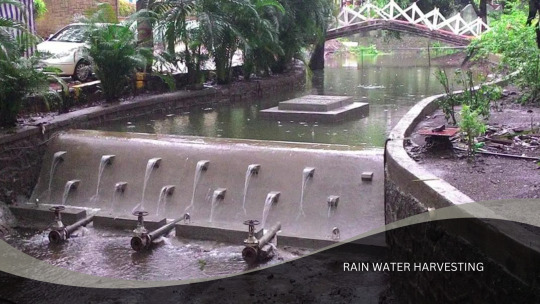
Go Green Technology (Reduce, Reuse & Recycle)
Over the past two decades, Mumbai has become India's most visited city and a growing population hub. This rapid growth has put a strain on resources like water and green spaces. To address this, many Mumbai projects are incorporating green features. These include the development of artificial mangroves, large-scale gardens, and lakes to preserve nature and provide a fresh environment for residents. Additionally, property developers are introducing rainwater harvesting, Water filtration plants and garbage restoration services to their communities, promoting sustainability through reduction, reuse, and recycling.

Connectivity & Transportation Infrastructures
Mumbai is known for its fast-paced lifestyle, and large-scale property development is a constant feature. To improve connectivity, new infrastructure projects like the Worli Sea Link and Atal Setu Bridge connect major parts of the city to suburbs and prime locations. Additionally, Mumbai's new metro lines, mono trains and the prime railway network provide greater comfort and convenience for daily commuters. Modernization of the railways with new trains reduces congestion and offers safer journeys.
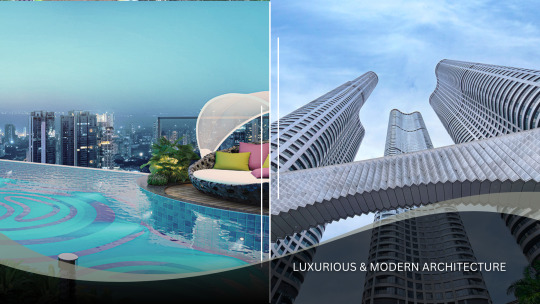
Modern Engineering & Luxurious Architecture
High-volume investors demand luxury and spacious living environments. Modern designs present a challenge ie. building architectural marvels in fast-growing areas with limited land. Technologies like heavy mobile cranes, temporary concrete plants and high-speed elevators facilitate the construction of modern real estate. In the luxury segment, glass-finished projects dominate central Mumbai areas like Parel-Worli to SoBo areas Dadar-Juhu. These buildings, constructed with modern glass manufacturing technology, add a glow to the city skyline. This lightweight and durable material is low-maintenance and withstands various weather conditions. Many engineering marvels include rooftop amenities like infinity pools, helipads, and vertical parking systems, catering to the luxurious needs of residents.
here's a Conclusion Technology giving boosts to mumbai's real estate market, by growing investors attentions towards good services, modern amenities, fast transportation & Smooth Connectivity. Providing Comfort & safety to Residents & sustainablity to limited Resources.
#real estate technology trends#mumbaiproperties#mumbairealestate#mumbai#dreamhome#propertyfinder#luxuryliving#mumbai infrastructure#tech used in architecture#technoloy in modern construction#sunblonde realtors#sunblonde realty#realestate
2 notes
·
View notes
Text
Creative Concepts: Designing Office Carpets for Success in Dubai
The Future of Office Flooring: Innovations and Sustainability in Dubai
In Dubai, the future of office flooring is taking a leap into the realm of innovation and sustainability, especially in the context of office carpet in Dubai. From smart flooring technology to eco-friendly materials and modular designs, the landscape of office floors is evolving to meet the demands of modern workplaces. Let's dive into these exciting trends and explore how they can revolutionize office spaces while aligning with Dubai's sustainability goals.
Smart Flooring Technology: Enhancing Efficiency and Comfort
Imagine walking into an office where the floor adapts to your needs - that's the promise of smart flooring technology. These futuristic floors are equipped with sensors and actuators that adjust lighting, temperature, and even acoustic properties based on occupancy and usage patterns. In Dubai's dynamic business environment, smart flooring can enhance energy efficiency, create personalized work environments, and contribute to a more comfortable workspace for employees.
Sustainable Materials: A Greener Approach to Office Design
Dubai is embracing sustainable practices, and office flooring is no exception. Companies are turning to eco-friendly materials such as recycled carpets, bamboo flooring, and reclaimed wood to reduce environmental impact. These sustainable options not only support Dubai's sustainability goals but also contribute to healthier indoor air quality and a more eco-conscious workplace culture.
Modular Designs: Flexibility and Adaptability
Flexibility is key in modern office design, and modular flooring offers the perfect solution. With modular designs, offices can easily reconfigure spaces, accommodate technology integration, and adapt to changing business needs. In Dubai, where businesses thrive on innovation and agility, modular flooring provides the flexibility to create dynamic work environments that foster creativity and collaboration.
Energy Efficiency: Reducing Carbon Footprints
Dubai aims to be a global leader in sustainability, and energy-efficient office flooring in Dubai plays a crucial role in achieving this vision. LED-integrated floors, energy-capturing tiles, and passive heating/cooling systems are just some examples of how innovative flooring solutions can contribute to reduced energy consumption and lower carbon footprints in office buildings across the city.
Promoting Well-being: Creating Healthy Workspaces
The link between workspace design and employee well-being is well recognized, and office flooring plays a significant part in creating healthy work environments. In Dubai, companies are prioritizing flooring solutions that promote ergonomic comfort, reduce noise pollution, and enhance air quality. By investing in employee well-being through innovative flooring choices, businesses in Dubai are fostering happier, more productive teams.
Case Studies: Inspiring Examples of Innovation
Let's take a look at some real-world examples of companies in Dubai that are leading the way with cutting-edge flooring solutions:
XYZ Corporation's Smart Flooring Integration XYZ Corporation, a tech-forward company in Dubai, recently implemented smart flooring technology in their new office space. The floors automatically adjust lighting and temperature based on occupancy, leading to significant energy savings and improved employee comfort.
Greentech Industries' Sustainable Flooring Initiative Greentech Industries, a sustainability-focused firm, opted for recycled carpet tiles and bamboo flooring in their Dubai office. This eco-friendly approach not only aligns with their values but also inspires their employees to embrace sustainability in their daily lives.
InnovateX's Modular Flooring System InnovateX, a start-up incubator, chose a modular flooring system for their office in Dubai. This design allows them to easily reconfigure spaces for different projects and accommodate rapid growth without major renovations, showcasing the flexibility of modular flooring solutions.
The future of office flooring in Dubai is bright with innovation and sustainability at its core. From smart technologies that enhance efficiency to sustainable materials that promote eco-consciousness, the possibilities are endless. By adopting these cutting-edge solutions, businesses in Dubai can create inspiring workspaces that prioritize both productivity and planet Earth. Let's step into the future of office flooring together!
#FutureOfOfficeFlooring#DubaiSustainability#SmartFlooringTech#EcoFriendlyDesign#ModularFlooring#EnergyEfficientSpaces#HealthyWorkspaces#InnovativeDesigns#GreenOfficeSolutions#CaseStudiesInDubai#SustainableMaterials#WorkplaceWellbeing#TechForwardSpaces#FlexibleOfficeDesign#InspiringInteriors#officefurnituredubai#furniture
2 notes
·
View notes
Text
Hydrovac Excavation: A Sustainable Approach to Subsurface Utility Projects
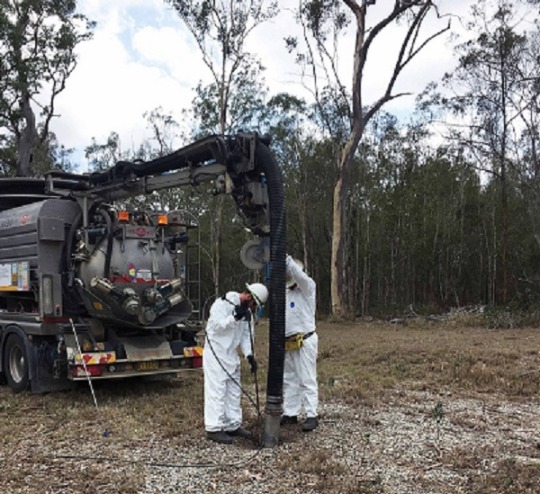
In the realm of construction, the impact on the environment is a significant concern. The integration of environmental sustainability technology is pivotal in mitigating this impact while maintaining cost-effectiveness in debris removal. Project Sustainability Management (PSM) is becoming increasingly relevant in this context. PSM encompasses the planning, monitoring, and control of project delivery and support processes, taking into account environmental, economic, and social factors throughout the project's lifecycle. One key aspect of this is the sustainable management of excavated materials, which can be repurposed, thereby reducing waste.
Aussie Hydro-Vac Services stands at the forefront of environmental sustainability. The company is renowned in the vacuum excavation, drain cleaning, and cable location sectors, adhering to ethical operating and contractual practices. By incorporating environmental sustainability technology, Aussie Hydro-Vac Services effectively addresses complex project issues and crisis situations.
Enhancing Safety in Exposing Subsurface Infrastructure
The construction industry is increasingly adopting environmentally sustainable practices, particularly in projects involving sensitive subsurface utilities. Hydrovac excavation plays a crucial role in this shift. This technique transforms soil into a slurry, which is then easily suctioned and vacuumed into a tank. Compared to traditional mechanical digging methods, hydrovac excavation is safer, reducing the risk of cave-ins and other hazards associated with conventional excavation.
Hydrovac excavation employs a specialised vehicle equipped with a hose or wand. This wand injects water under pressure into the soil, breaking it up and transforming it into a slurry. The slurry is then vacuumed into a tank attached to the vehicle, keeping the worksite clean and orderly.
Precision and Control in Urban Environments
Hydrovac excavation is particularly useful in urban settings where precision and minimal impact are essential. It offers greater directional control, allowing technicians to work more accurately, especially near underground utilities. The technique is faster than traditional digging, minimising disruption in densely populated areas. Hydrovac excavation is ideal for city installations, sewer repairs, and plumbing, among other applications.
Environmental Sustainability in Project Management
Aussie Hydro-Vac Services leverages environmental sustainability best practices in project management, offering competitive advantages and economic benefits. The company utilises hydrovac excavation techniques with vehicles designed for non-destructive methods. This approach is particularly effective around sensitive infrastructure, offering a safe and efficient process.
State-of-the-Art Equipment and Infrastructure
Aussie Hydro-Vac Services is committed to sustainable environmental project management, promoting the judicious use of natural resources. The company's service range includes vacuum loading, drain and culvert cleaning, liquid and solid waste disposal, non-destructive digging, emergency response, and more. Its fleet includes the Cap Bora 3200 large vacuum unit, CCTV and geotech vans, medium vacuum excavation units, and Kaiser recycling units, ensuring efficient and effective hydrovac excavation.
Safety is paramount when working with underground utilities, and Aussie Hydro-Vac Services is equipped with the latest machinery, trucks, and skilled personnel to ensure the highest safety standards. Hydrovac excavation is an innovative solution for commercial, industrial drain cleaning, and utility applications.
For a safe, clean, precise, and cost-effective excavation solution, contact Aussie Hydro-Vac Services. The company's state-of-the-art hydrovac excavation methods are ideal for a variety of terrains, including frozen ground. Serving primarily in Queensland and New South Wales, Aussie Hydro-Vac Services has the capability to operate across Australia.
2 notes
·
View notes
Text
Israel has apparently concluded its latest reinvasion of the Jenin refugee camp and the surrounding city in the occupied West Bank. Those watching the situation from the United States or elsewhere in the global north will have been told by policymakers and experts that these military operations are an unfortunate necessity to keep Palestinian violence in check and Israelis safe.
With a few confidence-building measures and economic initiatives offered to the Palestinian Authority (PA), some policymakers may still erroneously believe that the corner can be turned on violent escalations in the occupied territories and the course set for a return to peace-processing and a two-state outcome.
Strengthening PA capacity and thereby minimizing large-scale Israeli military interventions is the well-worn, go-to “solution” after events like those in Jenin. It sounds fair, reasonable, even pro-Palestinian to some. It just fails to address a key issue—namely that the PA is weak by design.
A truly Palestinian national authority that served the interests of the Palestinian people in the occupied territories, however, would be mobilizing economic, societal, and defensive resilience in ways to effectively undermine and challenge Israel’s military and settler presence. It would be leading the resistance to Israel’s occupation and de facto annexation.
In contrast, what Israel wants, what the United States and others have been supporting financially, diplomatically, and militarily—and what bolstering the capacities of the PA means—is to have a more effective subcontractor to the Israeli occupation: a Palestinian authority that is willing to subdue its own people. Indeed, the way in which the Palestinian security services were conceived was to lock in a Bantustan-like Palestinian security appendage to the Israeli military, thus becoming part of the broader apartheid reality.
But the PA cannot both do Israel’s bidding and be a legitimate and credible representative and servant of its own people. It is an impossible square to be circled, as has been proved for the past two and a half decades, since the five-year tenure agreed for limited interim self-governance expired in 1999.
Successive Israeli governments have worked with Western allies to prevent the PA from collapsing precisely so that it could play this subcontractor role. And now, because the PA is still seen as holding some kernel (however hollowed out) of a proto-national body in the eyes of Israel’s ultranationalist right-wing coalition government, prolonging it may no longer be politically sustainable.
The fact that a PA with these characteristics and which aligns with Israel’s interests (and has the backing of much of the Israeli security establishment) is now deemed an enemy by many in Israel’s government speaks to the degree of hostility in Israeli political discourse to anything labeled Palestinian.
What happened in Jenin is more a story of continuity than it is one of change in the history of Israeli policies against Palestinians. The previous, supposedly more liberal government led by Naftali Bennett, Yair Lapid, and Benny Gantz actually began this round of intensifying Israeli military incursions into Palestinian population centers, resuming extrajudicial killings and even launching an unprecedented assault on Palestinian civil society in which leading Palestinian human rights organizations and defenders were criminalized and designated “terrorists.”
Core policies—including illegal settlements, collective punishment, blockading Gaza, demographic engineering, and a system of separate and unequal treatment for Palestinians—are a feature of the Israeli regime, not a bug of the current coalition. Indeed, the leaders of all Zionist parties currently sitting on the Knesset opposition benches have come out in support of the Jenin attack.
In an environment so defined by hostility and the relentless narrowing of Palestinian political horizons, it is ludicrous to sign up to the mantra of economic peace.
Not all problems can be solved with money—development and economic assistance—whether from the United States or the Gulf states. Even setting aside whether huge investments will flow to Palestinians from the Gulf or elsewhere, it does not follow that disenfranchised Palestinians living under occupation, facing daily denial of fundamental freedoms and rights, can be subdued with an agenda exclusively focused on economic improvements.
That was the premise of the Trump administration’s approach, which crashed and burned.
It has been tried periodically for the last quarter century and often under more propitious circumstances than today. The jury is in. Economic peace is at best a pipe dream and at worst an intentional distraction from addressing an apartheid reality.
During the period of the PA premiership of Salam Fayyad, an unprecedented level of international donor funding went into Palestinian economic development and state-building. Fayyadism attempted to demonstrate that a more smooth-functioning, economically competent, and trustworthy Palestinian governing authority would prove Palestinian bona fides and unlock progress towards Israel’s withdrawal. It proved the opposite. Fayyadism ultimately made for a more cost-free and convenient Israeli occupation in which Israel could also focus on developing Palestinian natural resources in the West Bank for the benefit of Israelis.
Perhaps the giddiest hopes among those seeking microwavable solutions to Middle East peace center on expectations generated by the Abraham Accords normalization and the prospect of Saudi Arabia joining the party. As most will now agree, the Trump administration-sponsored Abraham Accords were categorically not designed with advancing Palestinian rights or peace in mind. What has happened, not coincidentally, is that Israel has concluded that its own impunity has reached new levels. And Israel has taken this lesson to heart.
There has been no benefit to the Palestinians, and while it would be an exaggeration to say the normalizing countries have buyer’s remorse, it is the case that a certain embarrassment prevails, as demonstrated by the fact that for months the Abraham Accords countries (plus Egypt) have been unable to meet at the ministerial level, in what is known as the Negev Forum.
It’s unclear that Saudi Arabia will exact a meaningful price for signing on. Even the most ardent advocates of a Saudi normalization-inspired on-ramp to peace progress are not suggesting that the condition be a withdrawal of Israel’s occupation, its settlers, or its military. Any such deal would, in other words, be squarely back in the zone of the kinds of economic inducements, tinkering with minor territorial designations, and recalibrating of the terms of occupation that have been tried and demonstrably led the world nowhere. Saudi leaders themselves would be well advised to steer clear of this house of cards.
One problem is that the foreign-policy community is hard-wired to look for quick-fix solutions. Honesty also demands that one acknowledge the tendency in Western circles to indulge Israel and to desperately reheat bad and failed ideas as a way of avoiding having to deal with the inconvenient truths of Israel’s commitment to its permanent regime of occupation, disenfranchisement, and denial of rights to Palestinians. Acknowledging this reality is not a recipe for hopelessness. It is not to say the world can do nothing. But accurately understanding reality allows policymakers to advance a course that can change that reality.
But it requires time and an open mind.
If one understands the reality as apartheid, then it allows Palestinians to reassess their strategic alliances and to set different terms for their relationships with the United States and the West, including how campaigns can be built to mobilize Western public support for a change in governmental policy. It’s worth recalling that Western governments and in particular the United States were latecomers to opposing South African apartheid.
This is not a story about moderates on both sides joining hands to defeat those bad apples who have inexplicably seized the levers of power. Unless and until the United States shifts the aperture and reframes the cognitive lens through which the relationship between Israelis and Palestinians is viewed, then it will have nothing to offer the parties. And guaranteeing that Israel faces no accountability, cost, or consequence for its actions only makes the West complicit in an appalling affront to human dignity.
It is on solid ground that in recent years the leading international human rights gatekeepers (Amnesty International and Human Rights Watch) and the blue-chip Israeli human rights organizations (including B’Tselem and Yesh Din) have joined Palestinian human rights groups in designating Israel’s treatment of the Palestinians as meeting the legal definition of the crime of apartheid.
While there is certainly a long-overdue need to rein in settler violence and provocations, which often operate under the protective watch of the Israel Defense Forces and are increasingly encouraged by government ministers, it is the structural violence of the military occupation and apartheid system that is the primary and proximate cause of Palestinian insecurity, repression, and despair. Apartheid regimes are by definition illegitimate, rendering them inherently violent.
Leading actors in Israel’s current government make no apologies for this apartheid arrangement; they have been transparent from the start. They wish to ethnically cleanse Palestinians from the occupied territories in a second “Nakba,” referring to Israel’s forced displacement of three-quarters of the Palestinian population from present-day Israel between 1947 and 1951. In that context, the attack on Jenin and the scenes of thousands of Palestinians fleeing the devastation and destruction of lives and livelihoods should have alarm bells ringing.
Though the Palestinian refugee camp in Jenin is often referred to by Israeli and U.S. officials as a hotbed of militancy, less discussed is why a refugee camp is there in the first place. Why are more than half of Palestinians refugees 75 years after Israel was established? Having been driven from their homes and prevented from returning as Israel unilaterally reengineered the proposed U.N. partition lines of 1947, Palestinians today take note as the Nakba in Israeli discourse transitions from being a history denied to a cautionary warning.
For its part, the PLO, the internationally recognized representative of the Palestinian people both inside and outside historic Palestine and Israel’s counterpart in the Oslo Accords, is also finally naming Israel’s regime over Palestinians as one of apartheid. Despite the weakness and co-optation of the PLO’s agent, the Ramallah-based Palestinian Authority, it will be increasingly difficult over time for the PA to continue cooperation with a regime that is thus defined by its principal.
While this particular attack on Jenin has concluded, what is becoming clear is that the windows of relative quiet between rounds of more intense Israeli military assault are becoming shorter. The logic of the Israeli regime appears to be one locked in its own spiraling cycle of accelerating displacement of Palestinians. That, in turn, will inevitably generate more intense Palestinian resistance from a new generation.
With no peace process to hide behind anymore, what is offered up as Western expertise and policy prescriptions is demonstrably unsustainable. It is a bluff ever more exposed in a global environment in which the West is out on a limb in claiming to champion the rule of law while multipolarity and a new form of nonalignment gain steam. In such a context, ending apartheid and building a just peace in Palestine-Israel is perhaps not such a fantastical notion after all.
Israel will need to be held accountable and sanctioned for its policies and illegal actions. The Palestinians should be supported in defending themselves against this illegal occupation. And the reframing in the current strategic environment must go beyond the Palestine-Israel question. The so-called Western-ordained rules-based order never delivered for the Palestinians. Its assumptions are now in a wider state of decomposition.
5 notes
·
View notes
Text
10 Stars Who Flew The Flag For Sustainable Fashion In 2021
2021 has seen the fashion industry ramping up its efforts to reduce its impact on the planet. But it’s not just brands that are taking action, with a number of celebrities, too, flying the flag for sustainable fashion this year. Whether by wearing vintage or opting for an eco-minded designer, A-listers have a powerful role to play in influencing our shopping habits, and making conscious fashion the norm.

Bella Hadid
Bella Hadid is well-known for her love of vintage, with her penchant for archival Jean Paul Gaultier, Comme des Garçons and Stella McCartney-era Chloé only continuing to grow this year. She’s also added some more unexpected brands into the mix, including a micro skirt from Noughties favourite Abercrombie & Fitch.

Kendall Jenner
Another JPG obsessive, Kendall Jenner has given us some of our favourite vintage looks of the year, including this printed sheer number by the French brand. The model is also a fan of eco-conscious brand Havre Studio, which restores and refits vintage men’s suits found at flea markets in Mexico City.

Rihanna
From Chanel to Dior by John Galliano, Rihanna’s shown off a series of envy-inducing vintage pieces in 2021. She’s also continued to champion New York-born and London-based designer Conner Ives, who repurposes vintage jerseys and silk scarves as part of his approach.

Angelina Jolie
Angelina Jolie is known for her environmental work, so it’s no surprise that the actor and activist has taken a conscious approach to her wardrobe this year. For a trip to Paris in July, she opted for looks from both Gabriela Hearst and Chloé, the latter of which gained B-Corp status this year. Later on, her children appeared on the red carpet wearing past looks from her wardrobe, including her 2014 Oscars gown.

Emma Watson
Another star known for her environmental activism, Emma Watson has also championed a number of eco-minded brands this year. The actor wore an upcycled Harris Reed dress to the Earthshot Prize ceremony, while opting for an Emilia Wickstead look made using recycled yarn to meet Al Gore. Watson also later chose a full-look by Scandi upcycling brand Rave Review during Cop26, the United Nations climate conference, in November.

Zendaya
Zendaya has delivered some of her best looks to date in 2021, including a series of vintage pieces – ranging from ’90s Versace to Noughties Roberto Cavalli. With the British Vogue October issue cover star revealing she’s creating an archive with stylist Law Roach, it just goes to show how a slice of fashion history can make a real statement on the red carpet.

Timothée ChalametIt’s no secret that Timothée Chalamet sets the internet alight with every look he steps out in – which is why it’s great news that he’s been championing sustainably-focused brands. They include Stella McCartney, a favourite of his, as well as pieces from Prada’s Re-Nylon range – made from discarded fishing nets and other plastic waste.

Lorde
Lorde showed her commitment to sustainable fashion by wearing not one but two eco-minded looks on the night of the Met Gala. First came the embellished separates by Emily Bode, which celebrated craft and featured charms, beads and pennies dating back to the 1890s. Then, there was the after-party dress by Collina Strada (a brand that she also chose for her “Solar Power” video).

Jaime XieBling Empire star Jaime Xie made a point of wearing vintage during fashion month, including an instantly-recognisable sculpted dress from Balenciaga spring/summer 2008, a printed dress from Versace’s menswear spring/summer 2005 collection, and a Dior spring/summer 2004 silk dress, from when the house was under the helm of John Galliano.

The Duchess Of Cambridge
Arguably the most famous repeat-wearer out there, the Duchess of Cambridge chose to rewear two Jenny Packham gowns (including one that was a decade old) for her appearances at the Earthshot Award ceremony and Royal Variety Show this year. Away from the red carpet, Kate also championed sustainability, opting for a recycled vest from Ganni during Cop26, and a top-handle bag from British brand Tusting earlier on in the year.
3 notes
·
View notes
Text
Waste recycling is usually assumed to be an invention of the environmental movement, as modern as the blue plastic bags we now fill with detergent bottles and soda cans. But it is an ancient art. Composting pits were used by the citizens of Knossos in Crete four thousand years ago. Much of medieval Rome was built out of materials pilfered from the crumbling ruins of the imperial city. (Before it was a tourist landmark, the Colosseum served as a de facto quarry.) Waste recycling – in the form of composting and manure spreading – played a crucial role in the explosive growth of medieval European towns. High-density collections of human beings, by definition, require significant energy inputs to be sustainable, starting with reliable supplies of food. The towns of the Middle Ages lacked highways and containers ships to bring them sustenance, and so their population sizes were limited by the fecundity of the land around them. If the land could grow only enough food to sustain five thousand people, then five thousand people became the ceiling. But by plowing their organic waste back into the earth, the early medieval towns increased the productivity of the soil, thus raising the population ceiling, thereby creating more waste – and increasingly fertile soil. This feedback loops transformed the boggy expanses of the Low Countries, which had historically been incapable of sustaining anything more complex than isolated bands of fishermen, into some of the most productive soils in all of Europe. To this day, the Netherlands has the highest population density of any country in the world.
— The Ghost Map: The Story of London's Most Terrifying Epidemic - and How it Changed Science, Cities and the Modern World (Steven Johnson)
#book quotes#steven johnson#the ghost map#the ghost map: the story of london's most terrifying epidemic - and how it changed science cities and the modern world#history#classics#sanitation#waste management#recycling#economics#agriculture#sociology#minoan civilization#crete#knossos#italy#rome#colosseum#medieval europe#netherlands
10 notes
·
View notes
Text
How Garbage Disposal in Brantford Supports Environmental Conservation
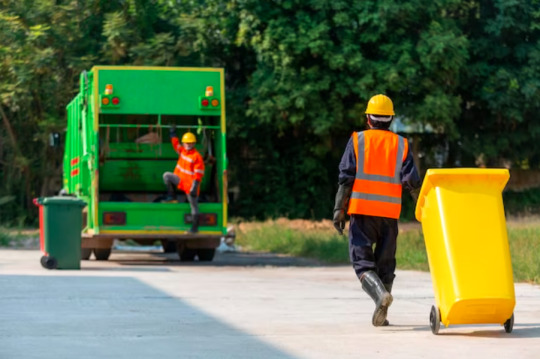
Preserving the environment and promoting sustainable practices are essential for the well-being of our communities. In Brantford, the city's commitment to environmental conservation is evident through its effective garbage disposal strategies. By implementing responsible waste management systems, Brantford not only ensures the cleanliness of its surroundings but also supports environmental conservation efforts. In this article, we will delve into how garbage disposal in Brantford plays a pivotal role in supporting environmental conservation. From waste diversion and recycling initiatives to minimising landfill usage and preventing pollution, Brantford's garbage disposal practices contribute to creating a cleaner and greener city.
1. Waste Diversion and Recycling: Garbage disposal services in Brantford, including the availability of garbage dumpster rental, promote effective waste diversion and recycling practices. By providing designated containers for different waste categories, such as recyclables, organic waste, and non-recyclables, these services encourage responsible waste management. Through proper sorting and recycling processes, materials that can be reused or repurposed are diverted from landfills, reducing the strain on natural resources.
2. Minimising Landfill Usage: Efficient garbage disposal practices significantly reduce the volume of waste destined for landfills. By offering convenient and appropriate containers for waste disposal, these services effectively minimise landfill usage. This reduction benefits Brantford by preserving natural habitats, minimising environmental pollution, and preventing the release of harmful substances into the ecosystem.
3. Prevention of Environmental Pollution: Proper garbage disposal in Brantford plays a pivotal role in preventing environmental pollution. By ensuring that waste is contained within designated containers, these services maintain cleanliness and prevent littering and unauthorised dumping. This proactive approach preserves the integrity of public spaces, safeguards waterways from pollution, and upholds the overall environmental quality of Brantford.
4. Resource Conservation: Garbage disposal practices actively contribute to resource conservation in Brantford. By promoting recycling and responsible waste management, valuable resources such as metals, plastics, and paper can be recovered and reused. This approach reduces the need for raw material extraction, conserves energy, and minimises the overall environmental impact associated with resource consumption.
5. Fostering Sustainable Behaviour: Garbage disposal services in Brantford play a vital role in fostering sustainable behaviour among residents and businesses. Through educational initiatives and awareness campaigns, these services encourage the community to adopt eco-friendly practices, including waste reduction and recycling. By instilling sustainable habits, garbage disposal services empower individuals to make conscious choices that contribute to the overall conservation of the environment.
Conclusion: Garbage disposal services in Brantford actively support environmental conservation efforts. Through waste diversion, minimised landfill usage, prevention of environmental pollution, resource conservation, and the promotion of sustainable behaviour, these services significantly contribute to creating a cleaner and greener Brantford. Embracing responsible waste management practices ensures a healthier environment for present and future generations, ultimately fostering the overall well-being and sustainability of the community.
#Garbage Dumpster Rental#garbage disposal brantford#garbage container rental#Rent a Bin Brantford#Brantford Bin Rental
3 notes
·
View notes
Text
How Technology Plays a Role in Solid Waste Management
Introduction
The Role of Technology in Solid Waste Management and Effluent Treatment explores the transformative power of technology in addressing the complex challenges of waste management. In this blog, we delve into how innovative technologies are revolutionizing the way we handle, process, and dispose of solid waste, paving the way for a more sustainable future. Discover the latest advancements in waste management technology, from smart waste collection systems and IoT-enabled sensors to advanced sorting and recycling technologies. We explore how these technologies optimize waste collection routes, minimize collection costs, and improve overall operational efficiency.

Categories of Solid Waste Disposal Management Services:
The following are the different sources of solid waste management services
Residential Waste: It consists of various types of waste produced by individuals or families in their daily lives. Residential waste can be categorised into different types based on its composition, such as organic waste, recyclable waste.
Commercial: Commercial waste refers to the waste generated by businesses, commercial establishments, and institutions. It includes a wide range of waste materials resulting from various commercial activities
Industrial: Commercial waste refers to the waste materials generated by businesses, industries, institutions, and other non-residential sources. It encompasses a wide range of waste types and can vary in composition depending on the nature of the business or industry. Commercial waste includes both non-hazardous and hazardous waste materials.
Agriculture: Agriculture is the practice of cultivating plants, raising animals, and producing food, fiber, and other products used for human consumption or industrial purposes. In agriculture, farmers and agricultural workers engage in various practices to grow crops and raise livestock, with the goal of maximizing yield, quality, and profitability.
Cities: Cities are densely populated human settlements that serve as centers of social, economic, and cultural activities. They are characterized by a concentration of buildings, infrastructure, and people. Cities play a crucial role in shaping society, fostering innovation, and driving economic growth.
Benefits of Solid Waste Management
Many people may not be aware of this, but solid waste Management has many benefits for our health and our environment.
An important benefit of proper Solid Waste Management is that it improves air and water quality throughout the country, which keeps us healthier by removing less harmful particles from the air and water. Technology in Solid Waste Management: A Role for Solid Waste Management
Another benefit is that it ensures the safe disposal of any residual or wet waste through proper waste segregation. Direct handling of solid waste could result in many types of infectious diseases for collectors if the waste is not properly secured. Exposure to this hazardous waste can affect health and could cause long-term illness.
Proper solid waste management also protects citizens from biohazards and physical harm, fosters community health, promotes sanitation, and provides opportunities to earn money from recycling.
This is where the local government unit and barangay will step in to help educate residents on how to properly separate waste according to the correct bins and areas to ensure the well-being of other residents and people in this line of work.
Conclusion:
In conclusion, solid waste management plays a crucial role in creating a sustainable and healthier future for our planet and communities. Through effective waste management practices, we can reap a multitude of benefits that extend far beyond simply getting rid of our trash. Proper waste management minimizes environmental pollution, protecting ecosystems, wildlife, and human health. By reducing the amount of waste sent to landfills, we conserve valuable land resources and extend their lifespan, ensuring their availability for future generations.
#Waste Management Technologies#Role of Technology in Solid Waste Management#Technological innovation in solid waste management#Water Treatment Plant Manufacturers in India#Sewage Treatment Plant Manufacturers in India#Operation and Maintenance of Water Treatment#Operations and Maintenance in Facility Management#Water Treatment Plant Project#Sewage Treatment Plant Project#Effluent Treatment
2 notes
·
View notes
Text
Boxes for Food Delivery | Bikekit

In recent years, the landscape of dining and food consumption has undergone a transformative shift, propelled by the rise of food delivery culture. Nowhere is this phenomenon more pronounced than in Saudi Arabia, where bustling cities and evolving consumer preferences have fueled a burgeoning demand for convenient and efficient food delivery services. At the heart of this trend lies the indispensable role of boxes for food delivery, which play a pivotal role in ensuring the freshness, quality, and safety of delivered meals. In this insightful exploration, we delve into the factors driving the rise of food delivery culture in Saudi Arabia and the burgeoning demand for a food delivery box.
BikeKit, a specialized entity in the B2B sector, provides an extensive selection of cutting-edge products spanning essential domains like delivery solutions, rider wellness, and rider safety. Whether the requirement is delivering hot meals or managing cold chain items such as medications and frozen foods, BikeKit's food delivery box exhibits versatility and innovation, catering effectively to diverse industries.
Changing Lifestyles and Urbanization
Rapid urbanization and changing lifestyles have reshaped the way Saudis dine and interact with food. With the increasing pace of life and the rise of dual-income households, there is a growing demand for convenient dining solutions that cater to busy schedules. Food delivery services by BikeKit offer a hassle-free alternative to traditional dining, allowing consumers to enjoy restaurant-quality meals in the comfort of their homes or workplaces. A food delivery box plays a crucial role in ensuring that these meals are delivered fresh, hot, and intact, thus enhancing the overall dining experience.
Tech-savvy Consumer Base
Saudi Arabia boasts one of the highest smartphone penetration rates globally, with a tech-savvy population that embraces digital innovations. The proliferation of food delivery apps and online platforms has made it easier than ever for consumers to order their favorite meals with just a few taps on their smartphones. BikeKit, a leading player in last-mile delivery solutions, provides boxes for food delivery that exceed expectations. Restaurants have the option to customize their packaging with branded logos, compelling slogans, and unique designs, adding a personal touch to their deliveries. The seamless integration of technology and logistics has revolutionized the food delivery landscape, driving the demand for food delivery boxes as an essential component of the ecosystem.
Cultural Shift Towards Convenience
Traditionally, Saudis have placed great emphasis on hospitality and communal dining experiences. However, changing social dynamics, increasing urbanization, and globalization have led to a gradual shift towards convenience-oriented lifestyles. While dining out remains popular, especially during social gatherings and special occasions, there is a growing acceptance of food delivery as a convenient dining option for everyday meals. BikeKit food delivery boxes are attentive to integrating temperature control elements like insulated linings, thermal bags, and gel packs. These features are instrumental in maintaining the desired temperature of hot and cold foods during transit, safeguarding the quality of the food until it reaches the customer's doorstep, and thereby guaranteeing a delightful dining experience.
Environmental Considerations
While the rise of food delivery culture has undoubtedly brought convenience and accessibility to consumers, it has also raised concerns about environmental sustainability. With increasing consumer awareness about environmental issues, there is a rising request for sustainable packaging options. In response, BikeKit is emphasizing eco-friendly materials and production methods. This entails the utilization of biodegradable packaging materials, minimizing plastic usage, and instituting recycling initiatives.
BikeKit stands out as a rare supplier and manufacturer of boxes for food delivery renowned for their innovative designs. Through thorough research, BikeKit excels in swiftly delivering highly practical solutions. Additionally, their world-class after-sales service further enhances customer satisfaction. Hence, exploring their website and selecting food delivery boxes tailored to your needs is highly recommended.
1 note
·
View note